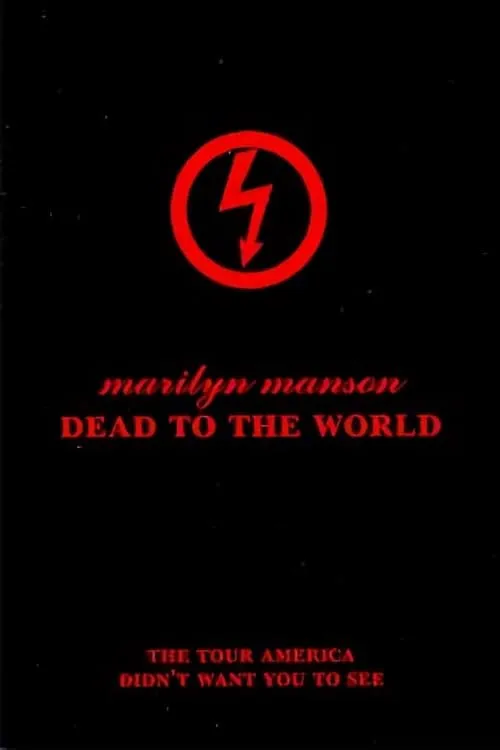Marilyn Manson: Dead to the World

Trama
Deep within the realm of the avant-garde, where societal norms are bent and twisted, and the conventional is carelessly disregarded, lies the tumultuous tale of Marilyn Manson: Dead to the World. Captured through the lens of the band's own cameraman, this captivating documentary delves into the turbulent landscape of the Antichrist Superstar tour, where the boundaries between the concert stage and reality became fluid, and the spectacle defied the constraints of the ordinary. As the narrative unfolds, the viewer is thrust into the midst of a maelstrom, with picketing zealots, fulminating moralists, and disingenuous politicians all vying for attention. Their collective outrage serves as a stark counterpoint to the sheer exuberance that characterizes the band's fans, who have descended upon the cities in droves, eager to revel in the excesses of the tour. At the epicenter of this maelstrom lies the enigmatic figure of Marilyn Manson himself. His presence is both mesmerizing and unsettling, an androgynous provocateur who embodies the contradictions of the tour. With his sharp wit and unflinching gaze, he navigates the treacherous landscape of the tour with the air of a master showman, always staying one step ahead of the controversy that seems to trail in his wake. As the documentary hurtles forward, it becomes increasingly clear that the tour is not just a concert, but a statement, a bold declaration of artistic dissent amidst a world that seems determined to stifle creativity and free expression. The images of the band's elaborate stage shows, replete with pyrotechnics and provocative imagery, serve as a stark rebuke to the complacent and the conformist. Meanwhile, the behind-the-scenes footage offers a glimpse into the inner workings of the band, revealing a world of tension and chaos, where egos are clashing, and the very fabric of the tour is threatened by external forces. Through it all, Manson remains steadfast, a guiding force who coaxes the best from his bandmates and shapes the tour into an unforgettable experience. One of the most striking aspects of the documentary is its intercutting of live concert performances with behind-the-scenes footage, creating a seamless transition between the two. This technique serves to humanize the band members, reducing them from larger-than-life figures to people with hopes, fears, and insecurities. Through this narrative structure, the viewer is able to connect with the band on a visceral level, empathizing with their emotions as they navigate the treacherous waters of fame and controversy. It is a powerful reminder that beneath the surface of the spectacle, there lie real people, struggling to make sense of the world and their place within it. Ultimately, Marilyn Manson: Dead to the World is a document of a bygone era, a fleeting moment in the trajectory of a band that would go on to shape the cultural landscape of the late 1990s. Yet, even as the context of the tour has receded into memory, the film's themes of artistic dissent, free expression, and the search for meaning in a chaotic world endure. Through its unflinching gaze and searing critique of the status quo, Marilyn Manson: Dead to the World stands as a testament to the enduring power of art to challenge and provoke. It is a film that reminds us that the most profound expressions of creativity often reside at the fringes of society, waiting to be discovered by those brave enough to challenge the norms.
Recensioni
Raccomandazioni


